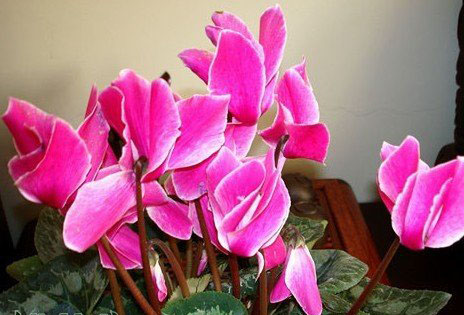Cultivation techniques of alpinia officinarum
Alpinia officinale, also known as galangal, is a perennial herb of the ginger family, mainly distributed in southwest China. Alpinia galanga leaves luxuriant, colorful, has a high ornamental value. Moreover, galangal was a kind of traditional Chinese medicine, which had the effects of dispelling cold and relieving pain, dispelling heat and clearing heat. It is generally used to treat stomach cold, abdominal pain and other problems, and its efficacy is strong. So how does ginger grow? Let's introduce the cultivation techniques of ginger by Xiaobian below!

1. Land selection and preparation
Alpinia officinale L. is suitable for growing in thick, fertile, soft and transparent soil with normal irrigation and drainage, and in sandy soil. After selecting the land, weeds and residues of previous crops in the soil should be removed in winter of the first year of planting, and burned into plant ash as fertilizer. Then the soil preparation work is carried out, and the crushed soil is leveled before the spring of the next year. Deep ploughing depth should be kept at about 30 cm. Because galangal has strong growth ability, it is not necessary to make ridges when preparing soil, and it is generally mainly cultivated. Can be interplanted with pineapple, citronella and other crops in the ground.
2. Rhizome propagation
The propagation method of galangal is generally based on rhizome propagation. When harvesting galangal, we should select about 7 concentrated strong buds growing within two years as rhizomes. The strong buds should be fat enough to ensure that there are no pests and diseases, and then the strong buds should be cut into small pieces of about 14 cm, and each small piece should retain 3 nodes. Usually done in spring and autumn, and then in the soil prepared before, control the planting density to dig a good planting hole. Put 1-2 pieces into each planting hole. Then cover it with fine soil and compact it, irrigate enough root fixing water to promote the root germination.
3. Transplanting in time
If sowing in spring, it is generally appropriate to transplant before and after Qingming Festival. On the soil of the whole land, apply sufficient base fertilizer, pay attention to the dosage, mainly 2600-2800 kg/mu, and improve the fertility of the soil. Then also pay attention to the control of good plant spacing, generally based on hole species. The depth of the planting hole is controlled at about 18 cm and the width is about 28 cm. Then each planting hole with roots is placed into a section, and the soil is filled at the side. After transplanting, cover with fine soil, water, do a good job of weeding, and improve the survival rate of transplanting.
4. Field management
When the seedlings grow to about 5 cm, they should do a good job of thinning seedlings, follow the principle of keeping strong and getting weak, and control the seedling spacing at about 5 cm. And in the seedling stage should pay attention to do a good job of weeding, not less than twice, and in each season after the closure of weeds should be appropriate. Then according to the weather and soil moisture to do a good job of watering, keep the soil moist, promote the tiller and rhizome growth of galangal. And pay attention to timely topdressing to meet the nutrients needed for the growth of galangal, and finally intercrop crops with less nutrient requirements in the field to improve land use efficiency.
The above is a brief introduction to the cultivation technology of galangal. The growth ability of galangal is relatively strong, but we need to do a good job in field management to enhance the resistance ability of galangal and ensure its healthy growth. Today's introduction is here, this article is for reference only, thank you for reading and support.
- Prev

Planting method of Rhizoma Corydalis
Planting method of Rhizoma Corydalis
- Next

How to save wilted flowers
The wilting phenomenon of flowers is the biggest headache for flower growers. There are many reasons for flower wilting, such as lack of water, fertilizer, light, temperature, inadaptability to pH in soil, excessive application of chemical fertilizer, infection with virus, damage by insect pests and poisonous gases in the air, etc.
Related
- Fuxing push coffee new agricultural production and marketing class: lack of small-scale processing plants
- Jujube rice field leisure farm deep ploughing Yilan for five years to create a space for organic food and play
- Nongyu Farm-A trial of organic papaya for brave women with advanced technology
- Four points for attention in the prevention and control of diseases and insect pests of edible fungi
- How to add nutrient solution to Edible Fungi
- Is there any good way to control edible fungus mites?
- Open Inoculation Technology of Edible Fungi
- Is there any clever way to use fertilizer for edible fungus in winter?
- What agents are used to kill the pathogens of edible fungi in the mushroom shed?
- Rapid drying of Edible Fungi

